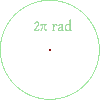thump_rrr
Member
Both have great glass and perform well in low light.Off topic but Id love to hear your opinion on the TT vs the S&B.
After using a scope like the Schmidt & Bender with the the MTC (More Tactile Clicks) turrets, where every full mil is more of a clunk than a click, it’s hard to use anything else.
The Tangent turrets probably have the best feel and are the easiest to adjust with its tool less zero.
The reticle in the S&B is like an axe compared to the Tangent which is more like a scalpel.
Shooting the Tangent this weekend for the first time at any meaningful distance was great.
The eye box is pretty forgiving at maximum magnification. I didn’t have to think about the scope.
For me when I don’t notice a scope that’s when I know it’s good.
EDIT: One more plus for the Tangent Theta is that it doesn’t have any tunneling at any magnification.
The Schmidt & Bender does show tunneling between 5-7x magnification.
I never spend any time down there to care to be honest.
Last edited:


